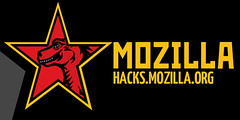 Over at Mozilla Hacks Christopher Blizzard is asking readers to explain what “the open web” means to them.
Over at Mozilla Hacks Christopher Blizzard is asking readers to explain what “the open web” means to them.
My answer went something like this (it was slightly less elaborated and not as structured, guess I have a problem with character-limits):
The open web is an ecosystem based on free and open standards, allowing anyone to:
- participate in evolving the standards
- using the standards to build and use
- server- or client-side infrastructure-type applications (e.g. Apache or Firefox)
- websites and -applications, relying on the standards-compliant infra-type apps
without being limited by commercial or patent restrictions (per se).
It is my conviction that it were exactly these principles which allowed the WWW, as it was invented by Tim Berners-Lee (and Robert Cailliau off course), to become the success it is today. Sir Tim announced and published the first specs (specifically http/html) and asked people for feedback and encouraged them to put up servers and pages and to develop their own WWW-applications in 1991. In 1993, as a reaction to the University of Minnesota wanting to charge license fees for Gopher, CERN officially released the project into the public domain in 1993 with the aim:
“to further compatibility, common practices and standards in networking and in computer supported collaboration”
A few years later Gopher (which didn’t only suffer from the license-issue, but was less flexible as well) had disappeared completely, and the open WWW boomed and revolutionized the way information was published and consumed.
So the next time anyone asks you why “the open web” is that big a deal, you might want to ask them if they would rather Gopher instead.






